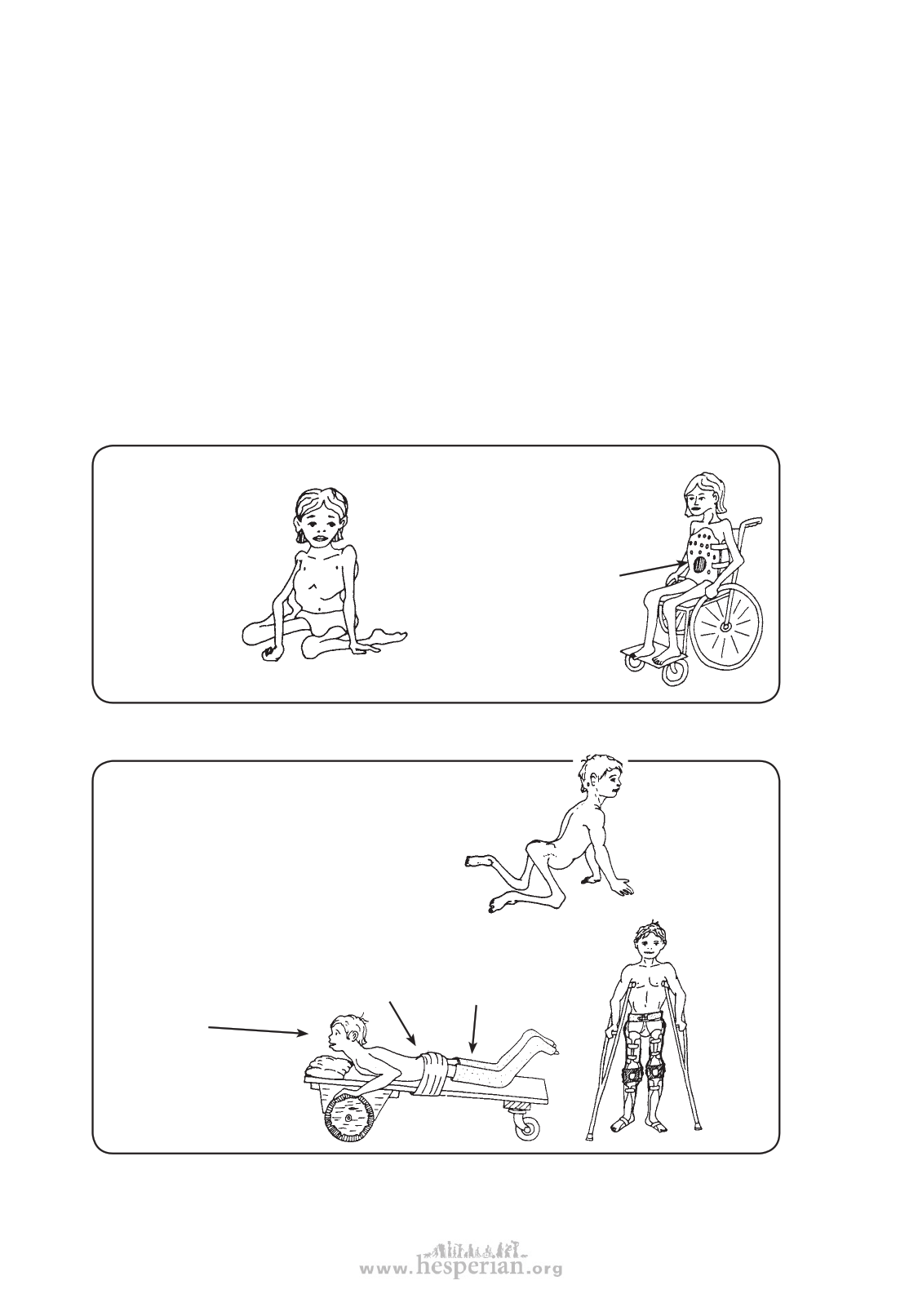
66 chapter 7
EVALUATING A CHILD’S NEEDS FOR AIDS AND PROCEDURES
Step 1: Start by learning what you can through talking with the child and family (see Child’s
History, p. 37 to 38). As you do this, watch the child move about. Observe carefully which
parts of the body seem strong, and which seem weak. Look for any differences between
one side of the body and the other—such as differences in the length or thickness of the
legs. Are there any obvious deformities, or joints that do not seem to straighten all the
way? If the child walks, what is unusual about the way she does it? Does she dip forward
or to one side? Does she help support one leg with her hand? Is one hip lower than the
other? Or one shoulder? Does she have a humpback, a swayback, or a sideways curve of
the back?
These early observations will help you know what parts of the body you most need to
check for strength and range of motion. Often, by watching a child you can begin to get an
idea about what kind of aids or assistance may help. For example:
Carmen appears
to have severe
paralysis
affecting both
legs and her right
arm. Weakness in
her trunk (main
part of the body)
appears to have
caused a severe
S-shaped curve
of the spine.
She will probably
never walk, and will
need a wheelchair or
wheel board.
You may want also to
make her a body brace,
or help her in other
ways to sit more
upright and try to keep
the spine from bending
more.
Pedro appears to have severe paralysis in his legs and
hips. It looks as if his hips, knees, and feet cannot
straighten (contractures). Weak stomach muscles and
severe hip contractures may be the cause of his swayback.
Because his arms look
strong, Pedro will
probably be able to
walk with crutches and
leg braces. But first his
contractures must be
straightened.
If the contractures
cannot be straightened
by gradual stretching,
he may need surgery.
strap to
gradually
straighten
hips.
casts to
straighten
knees and
ankles
Because
of hip
weakness,
he may
need long
leg braces
with a hip
band.
Disabled village Children